Cycle III – Bar: Mapped by Alec Reynolds
Posted: May 2, 2022 Filed under: Uncategorized Leave a comment »The Experience
Cycle III was the final presentation stage of the project. Bar: Mapped is a demonstrative example of an elevated nightclub bar experience that would be regarded as a special attraction at venue. The purpose of this project was to demonstrate a pragmatic and engaging use case of projection mapping. Below I will walk you through the intention behind the Isadora side of the experience:
- A user will order a drink off of the themed menu. The drink will be prepared and then the bartender will press the drinks button on the iPad kiosk which will trigger the desired scene in the bar area.
- The iPad communication works through a TouchOSC communication protocol over a network that both the client running Isadora and the iPad are on.
- When the Isadora patch receives the input from the iPad, a trigger is sent from the TouchOSC actor to a jump scene actor. There are six total scenes in the patch representing the Main bar scene and then one scene for each of the six themed cocktails.
- Once on the desired scene there are four main pieces of media that are playing:
- A large video is mapped to the screen
- A smaller video is mapped to the box that the bottles rests on
- The smallest video is mapped to four out of five of the liquor bottles. The fifth bottle is a mapped image of itself. The design intent behind this was to highlight the main ingredient in their specific cocktail
- A sound effect that compliments the theme is played
- After the large video reaches the end of its loop, the movie player actor triggers a scene jump back to the Main bar scene and a new drink can be ordered.
Lessons Learned
Isadora is an extremely sensitive and temperamental software. For my Cycle III performance, I unfortunately was not able to present my work in the fashion that I intended to. Due to what I believe was a performance issue with the high variability in resolution and codec, Isadora would reliably crash each time that I tried opening a stage into full screen mode, or mapped any bottle. In order to salvage a performance, I was able to loosely map the Main bar scene bottles and fit my small stage to full screen. TouchOSC still worked and demonstrated the triggering well, but nothing was mapped.
Beyond complications with Isadora, I was able to have a fundamental appreciation for how much skill Projection Mapping takes. Being able to manipulate the projector angled lighting onto a physical asset is nothing short of an artistic craft. Just scratching the surface of complexity with small curve bottles, I now have a deeper appreciation for some of the large scale projections, the likes of which you see at Disney and Large Municipality Events.
If I Had To Do It Again
If I were to do this project again there are a few steps I would take to ensure that the performance was more successful. The primary change is that I would ensure that all my media and content was formatted the same so that Isadora could process it without crashing. Next, I would try to make the experience understood better that Bar: Mapped is in its own room / section of the nightclub and that the music that is heard is bleed over from the main dance floor. In tech rehearsal the music was prepared such that it was at a quieter volume and was only playing from two speakers in the rear of the performance space from the perspective of Bar: Mapped. During the Cycle III performance, the music was blaring and playing from all channels making it sound like the room itself was the nightclub. The final lesson I have learned is that in an environment like that, the people that want to be there are going to have fun, and the people that got dragged there, well its them that you have to work the hardest on to ensure they have a good time. My hope would be that the extra layer of immersion that the projection mapping provides, would fascinate the unsteady patron and keep them drinking and dancing.
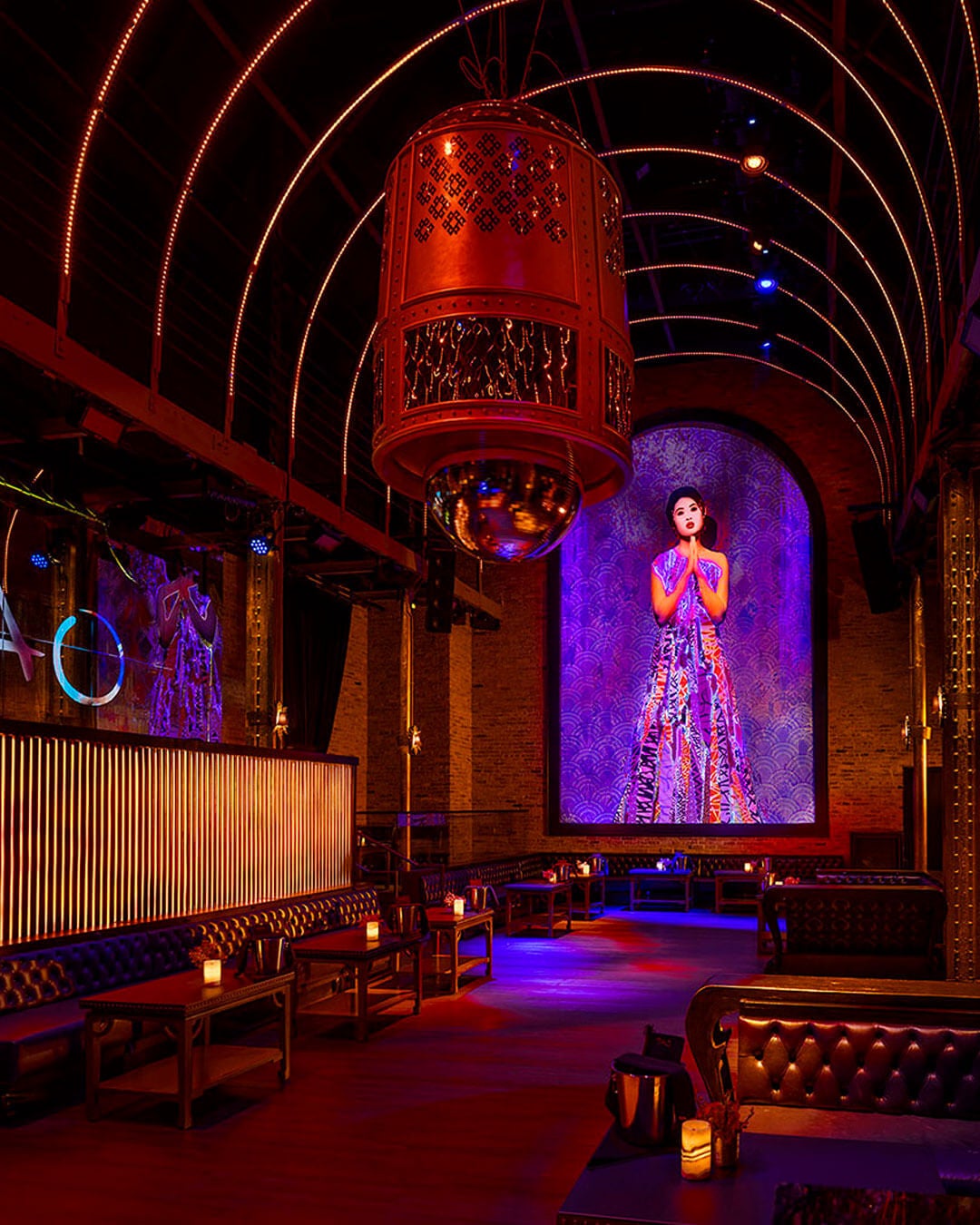
Cycle II – Bar: Mapped by Alec Reynolds
Posted: April 12, 2022 Filed under: Uncategorized Leave a comment »This iteration of the project was the realization of the first cycle, with physical assets, the framework of the Izzy patch, and actual mapped graphics. More specifically, a section in the ACCAD Motion Lab was selected for its large backdrop (which happens to be a blackout curtain), and versatile lighting opportunities.
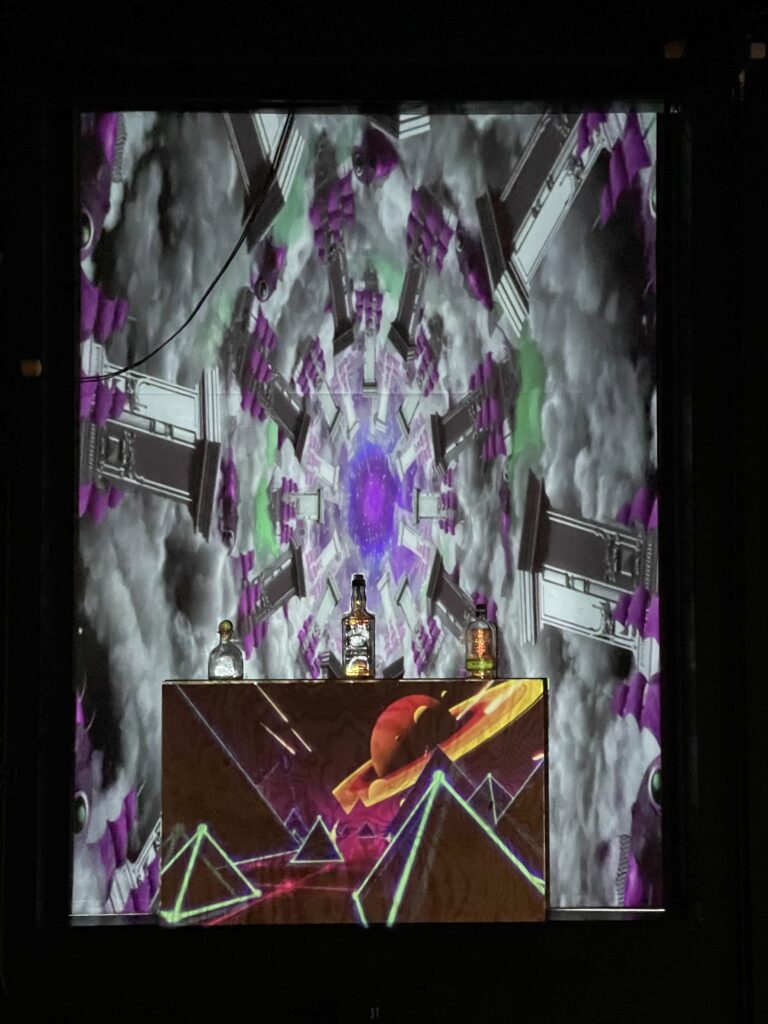
There are multiple pieces of this larger projection mapping project:
- Physical Assets: These are the physical pieces that require a mapping and will have a digital projection placed on them uniquely (bottles, screen, box)
- Mapping: The manipulation of content on the software side so that it assimilates the shape of the physical asset
- Communication: Using the effective TouchOSC software, I was able to create a communicating menu that could interact with Isadora and the project patch
- Reaction: The spectacle that occurs to emulate a specialty themed cocktail being ordered.
The projection actor in Isadora is a powerful projection mapping tool and lets you create quick and simple maps for a performance. Bar: Mapped features upwards of 7 maps with unique content going to each different layered asset.
The menu is the device by which each reaction is triggered. TouchOSC channels are enumerated in my Isadora patch, through which OSC listening actors attend to any input from my menu. When a drink is “ordered” it triggers the specific reaction.
The purpose of the project is to create an atmosphere of a nightclub with music in the background and attention drawn to the bar. During the cycle II performance, critical information and feedback was gathered. The volume of the background music is important so as not to drown out the effects of the reactions. It will also be necessary to manipulate the location of the background music so that it creates more of an atmospheric effect versus grabbing a users attention in a distracting way.
Moving into next cycle the following changes will take place:
- Decrease the length of a reaction (~20 sec for Cycle III)
- Paint physical assets white
- Have a louder audio source for reactions
- Modify position of background music
- Add club-like lighting
- Other secret additions…
The cycle III documentation will host a full breakdown of how the Isadora patch works, along with design choice insights.
Cycle 1 – Bar Mapped – Alec Reynolds
Posted: March 24, 2022 Filed under: Uncategorized Leave a comment »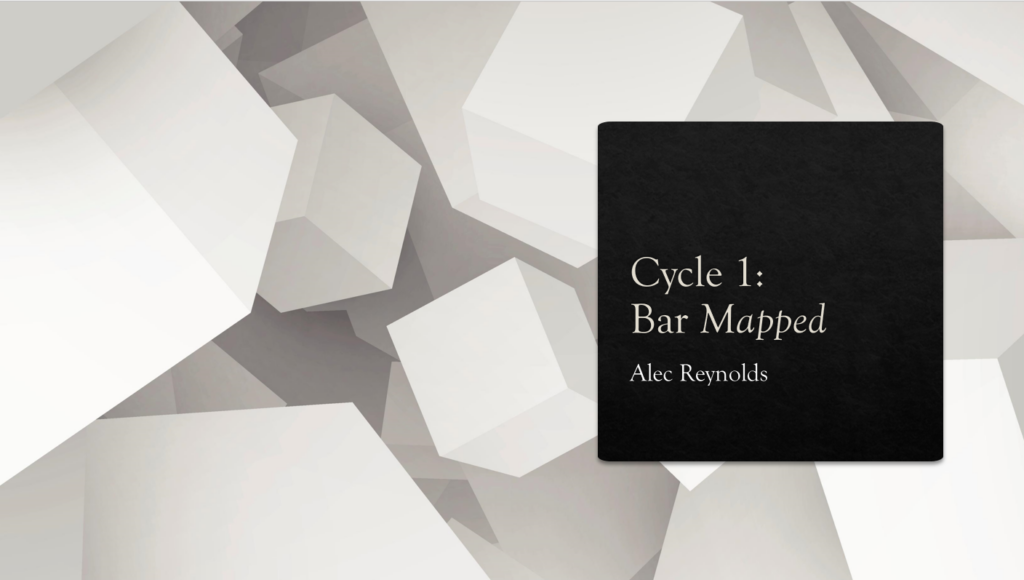
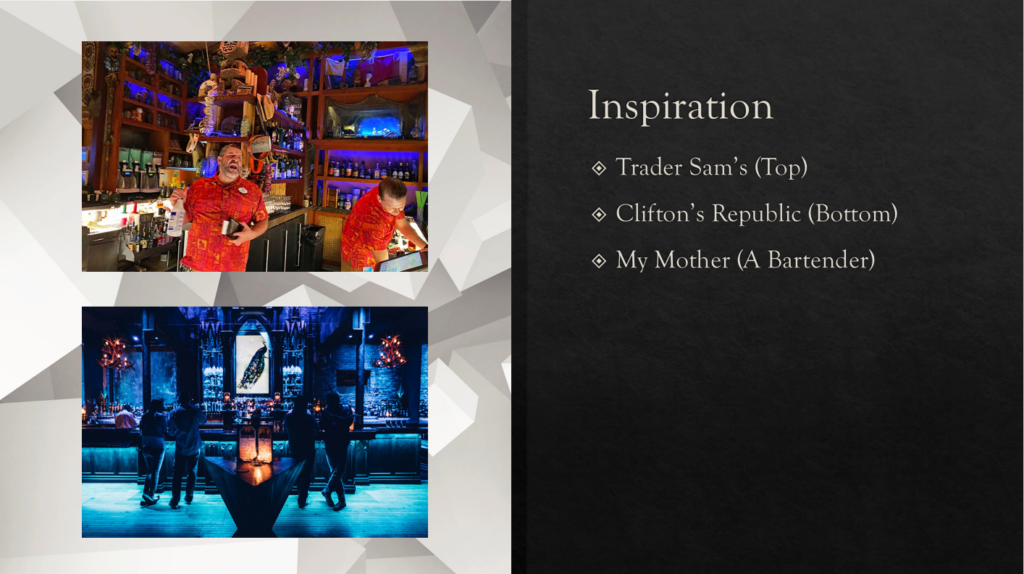
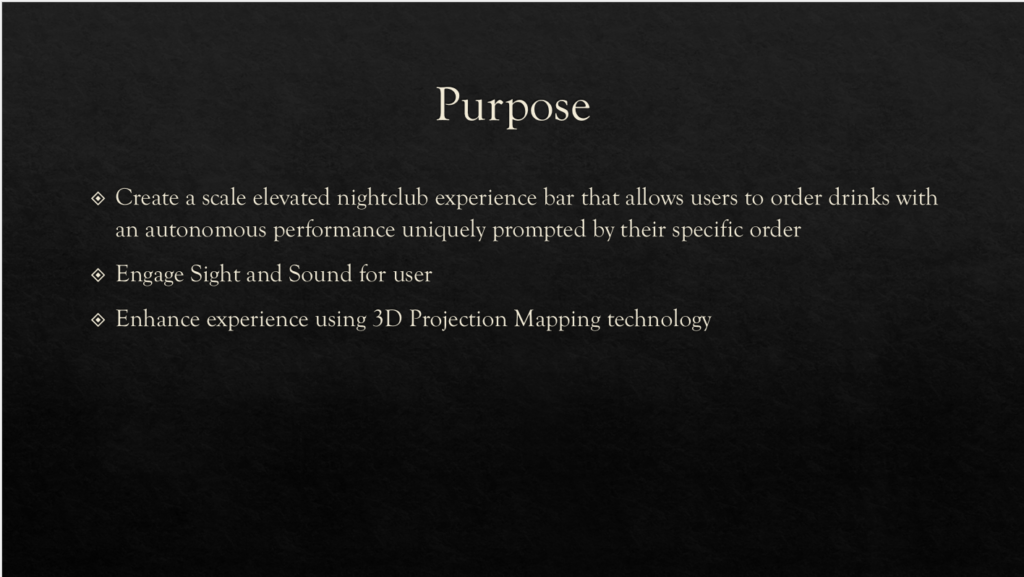

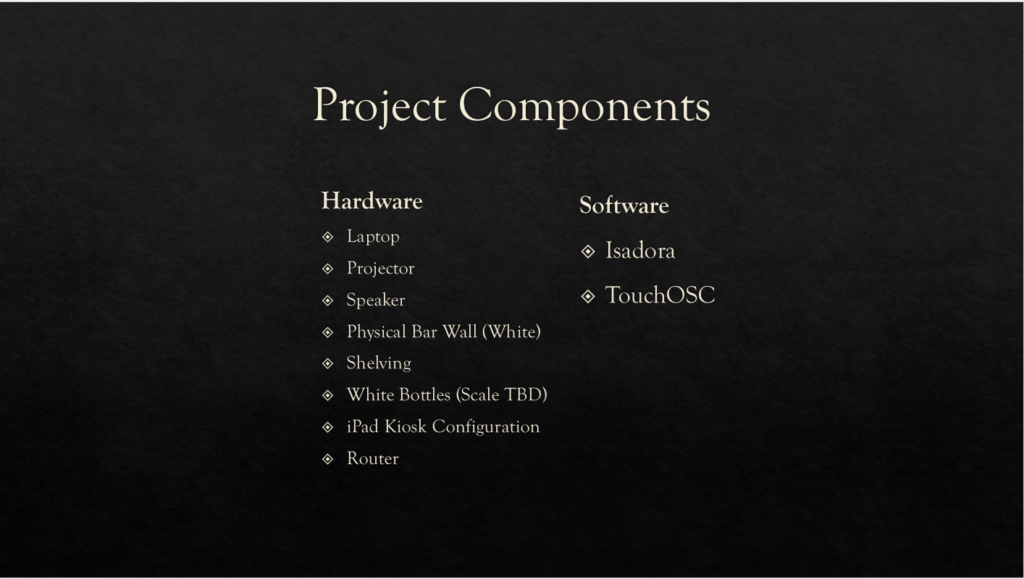
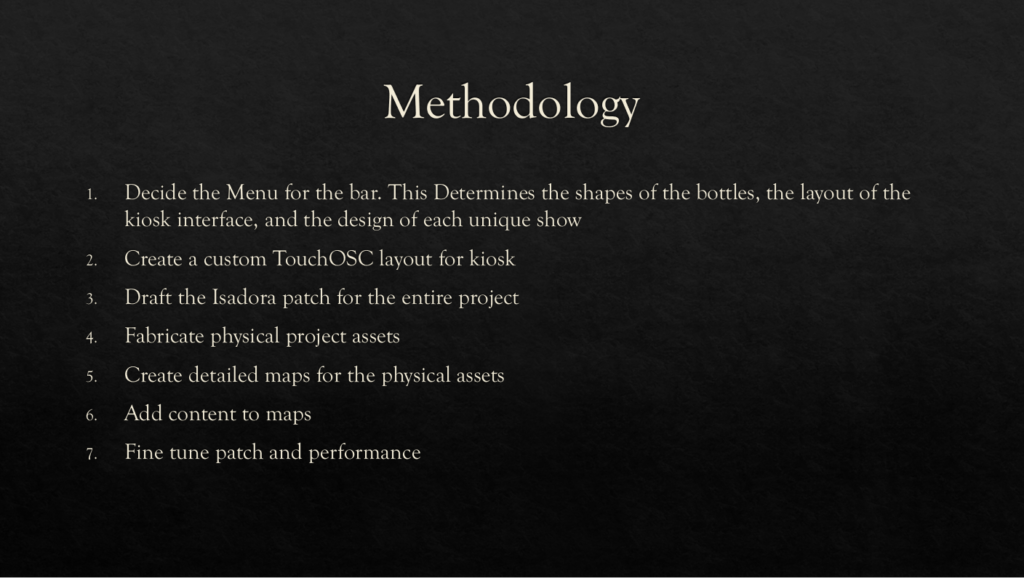

Pressure Project 3 – Marvel – Alec Reynolds
Posted: March 4, 2022 Filed under: Uncategorized Leave a comment »For the final pressure project, I enlisted the use of a franchise that has had a significant impact on my life. Marvel Studios has created a Global Phenomena that has not been matched before. The complexity of story telling and world building that the Marvel films achieve is nothing short of incredible.
The prompt for the third pressure project encouraged students to create a auditory narrative that discussed a piece of cultural importance in our lives. From this, I was able to attribute the influence that the films have had on me as a person. With the release of Iron Man in 2008, I fell in love with the character and the complexity of his suits. I would go so far to say that the character heavily motivated my passions for STEM and especially engineering.
Further, the Marvel films do an impressive job at tackling real world issues through the lens of a supernatural world. By giving characters that are literally God’s, flaws and grounded issues, generates a deeper sense of connection and reflection.
For my pressure project I wanted to create an auditory experience that created a sense of excitement and inspiration for the viewer. I begin the audio with a narration of how I view Marvel in the context of my culture. I have shared so many intimate moments with friends, family and strangers over the existence of these films. The next segment in the audio is a narrative story about the growth of the marvel cinematic universe up to the finale of the Infinity Saga, Endgame. The sounds in this story are designed to evoke excitement, inspiration and appreciation for the dynamic capacity of the films.
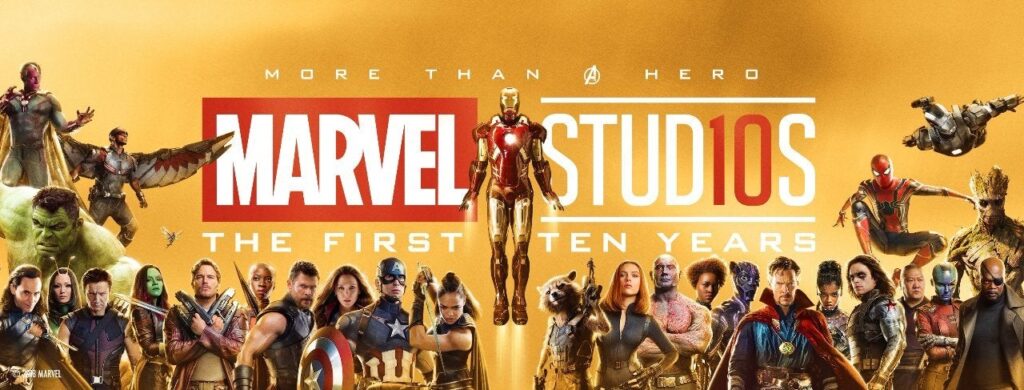
I chose to focus the visual aspect of the experience around the Marvel 10 Years promo, since this was an important time in the MCU where I really reflected on how big of a role these movies had on me. I think back to all the times that I was obsessing over these films at a very young age, and to see the passion stick with me all these years is so fascinating. The medium which I shared the image is through a 3D printed picture called a lithophane. These are 3D pictures that you can feel due to the contoured depth that they are printed with. I accessorized the experience with RGB LEDs to highlight specific moods in the audio.
If I had more time with this project I would love to print the banner in a much larger format and then create a lighting system that illuminates each character when they have a sound bite introduced in the audio. I also would have created an audio track that was 120 sec versus 180 sec.
Pressure Project 2: PLUR
Posted: February 22, 2022 Filed under: Uncategorized Leave a comment »For each of my pressure projects, one of my goals was to apply at least one of my three passions to the assignment: Theme Parks, EDM, and Marvel. This pressure project is the realization of a popular cultural trend at electronic festivals called PLUR. While the trend is not as proliferated these days, you will still see individuals at festivals passing off their “Candy” bracelets to one another in an act of Peace, Love, Unity, and Respect (PLUR).
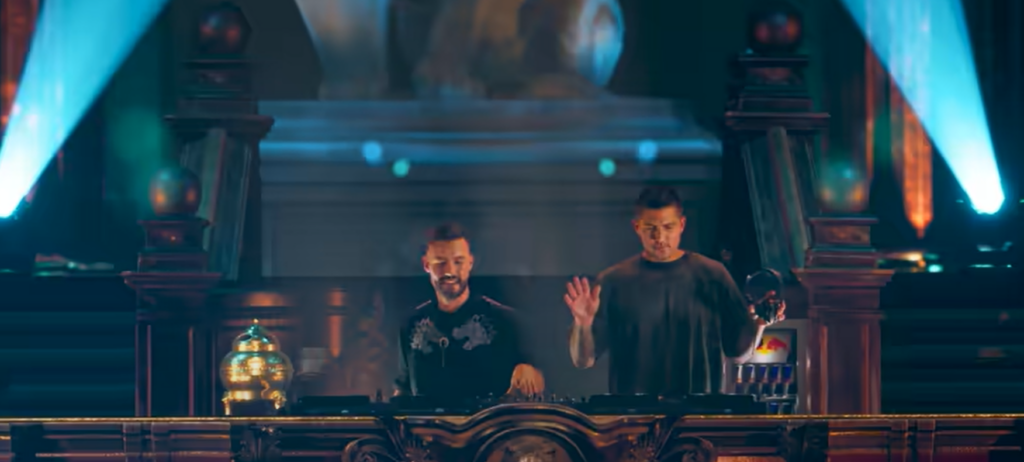
The prompt of this pressure project was that a secret is revealed. This started me off on a brainstorming session in which I was trying to figure out a way to include electronic music as a revelation. My first train of thought was making a sort of puzzle that had to be solved in order to reveal a specific song. The thought of the acronym of PLUR popped into my mind as a discussion of the popular the game Wordle was occurring, prompting me to devise a system that required the user to get the configuration of the letters of PLUR in the correct order.

Another criteria of the project was that it included the use of the Makey-Makey. I went to my CAD of choice, SolidWorks, and began sketching a prototype housing and letter tiles.

My vision for the system was that each tile had its own unique spacing, so that it could only fit on one spot on the housing. Each tile would complete the circuit for one of the arrow keys on the Makey-Makey, helping to trigger a specific action within an Isadora patch.
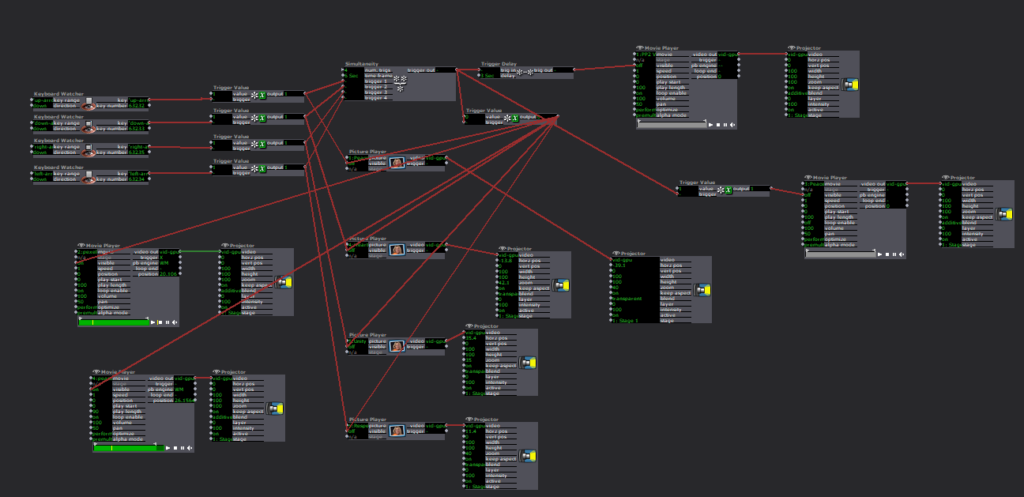
The Isadora patch is arranged such that each tile correctly placed triggers an icon onto the stage. Once all 4 icons are triggered, then the secret is revealed. I chose to use a clip from Tomorrowlands After Movie, found at this link here
The point of the project is to introduce the idea of PLUR to others and also show off how incredible the European Music Festival scene is.
If given more time with project I would go back and fix the following items:
- Larger clearances for the tiles spacing. Although I factored in the accuracy of a printed part, I did not give the model enough clearance and was left to sand down some of the tiles.
- More room in the housing to fit my hand into to make secure the alligator clip connections. This got frustrating.
- Less of a focus on small details and more of a focus on functionality. I put extra effort into dimensioning the Makey-Makey to have it sit nicely within the housing, but due to the inaccuracies with printing, it ultimately just had to be haphazardly contained within the model.
- Have the patch play the main reveal on a second stage to the output monitor so that manual intervention is not necessary to hide the icons after reveal starts.
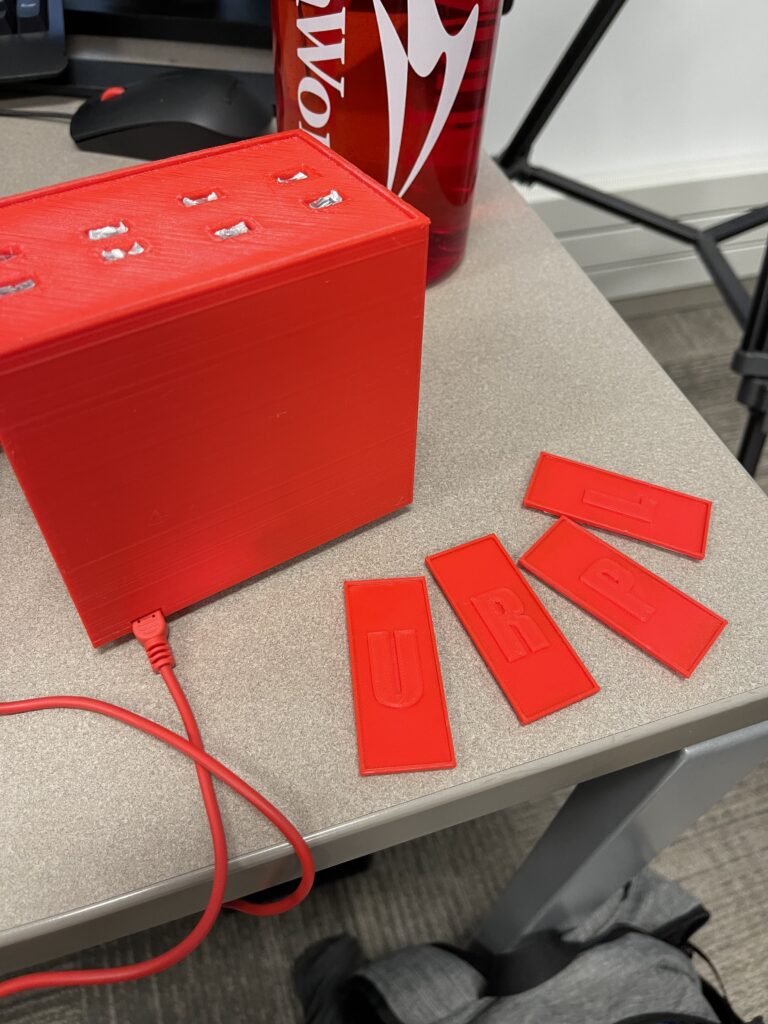

Pressure Project 1 (Theme Park Admission Queuing) – Alec Reynolds
Posted: January 27, 2022 Filed under: Uncategorized Leave a comment »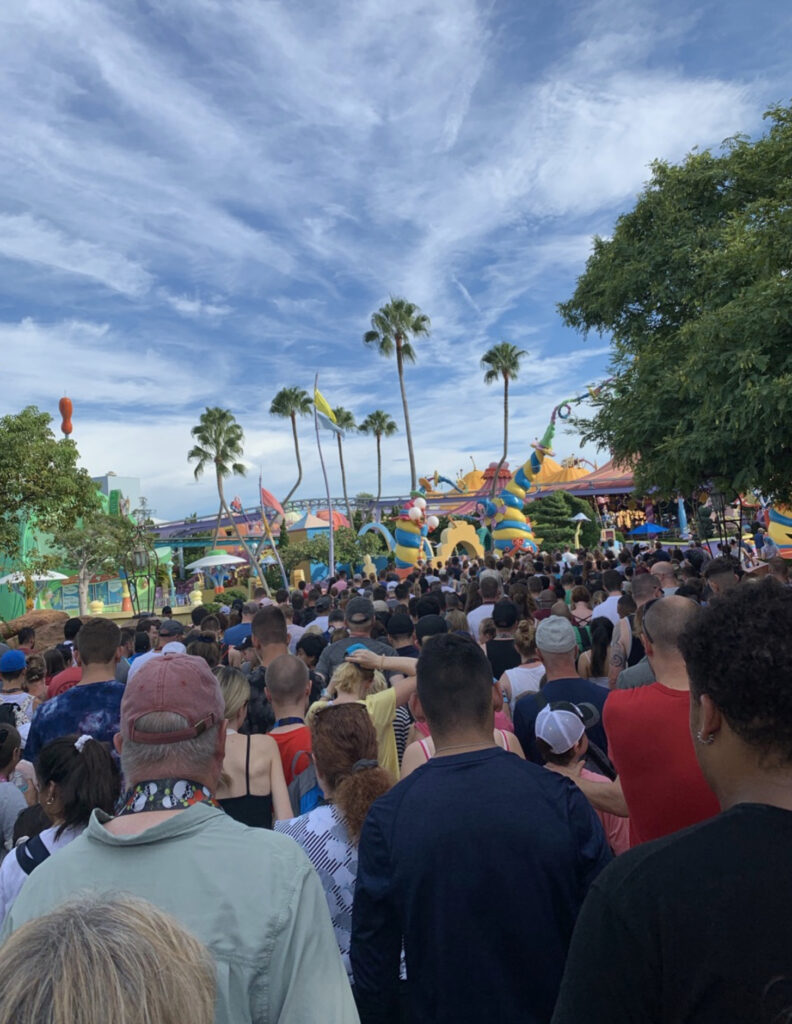
During my visit to Universal Orlando Resort Island’s of Adventure, I noticed an interesting dynamic of social congestion before I even entered the park. To gain admission to the park, one must pass through turnstiles at the front of the park with a valid form of admission. Before the park opens for the operating day, eager guests, ready to get a jump on their day, pile in by the hundreds. This leads to a huge back up of guests and an inefficient admission throughput. Before we dive in to a solution to this problem, let’s contextualize the situation with some of my observations.
OBSERVATIONS:
-Looking at the nature of the congestion I noticed that it was homogenous and the majority of people moved towards the gates. A majority of the congestion contained groups, versus individuals.
-There were many obstacles that the crowd had to navigate around, including floral planters, ticket kiosks, poles and shade structures, ticket sale booths, trees and other common objects like waste recepticals.
-All the lines moved at a unique pace.
-Groups were often spotted abandoning their spot in line to opt in for a seemingly faster one.
-Some turnstile lines appeared to have less guests in them if they were partially obscured by an object.
-From far away, there was no clear separation of individual lines.

-Closed turnstiles would lead to a bottleneck merge effect close to the open turnstiles, creating an even denser congestion.
Observational Imagery:
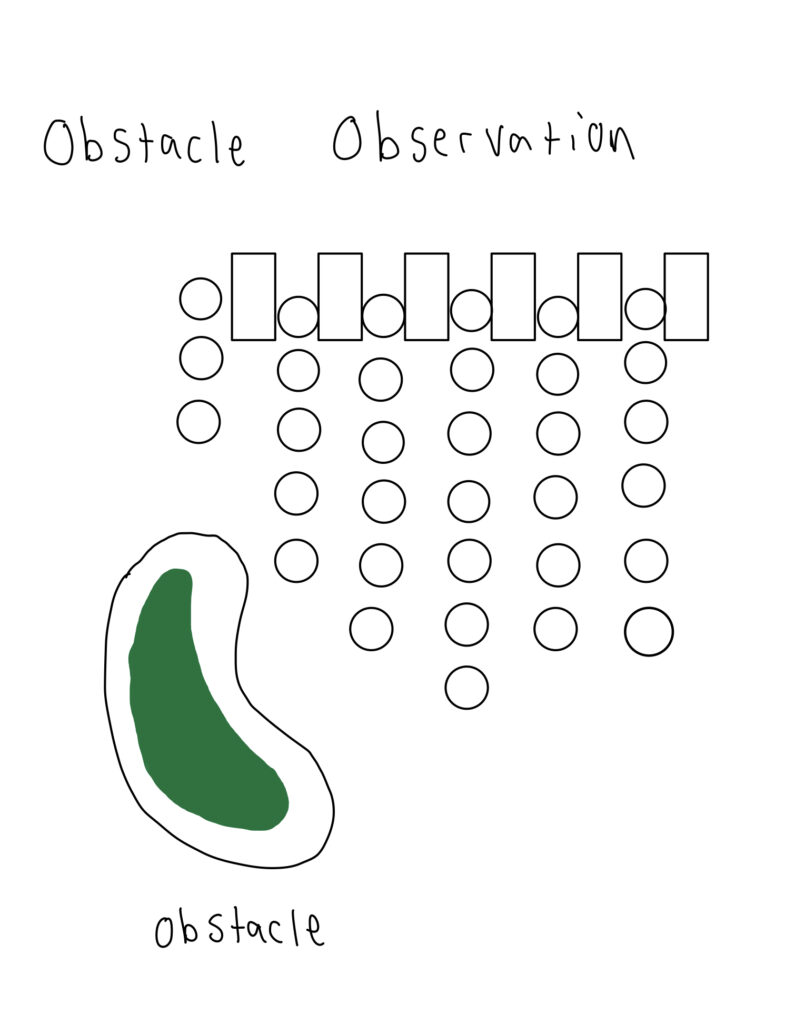
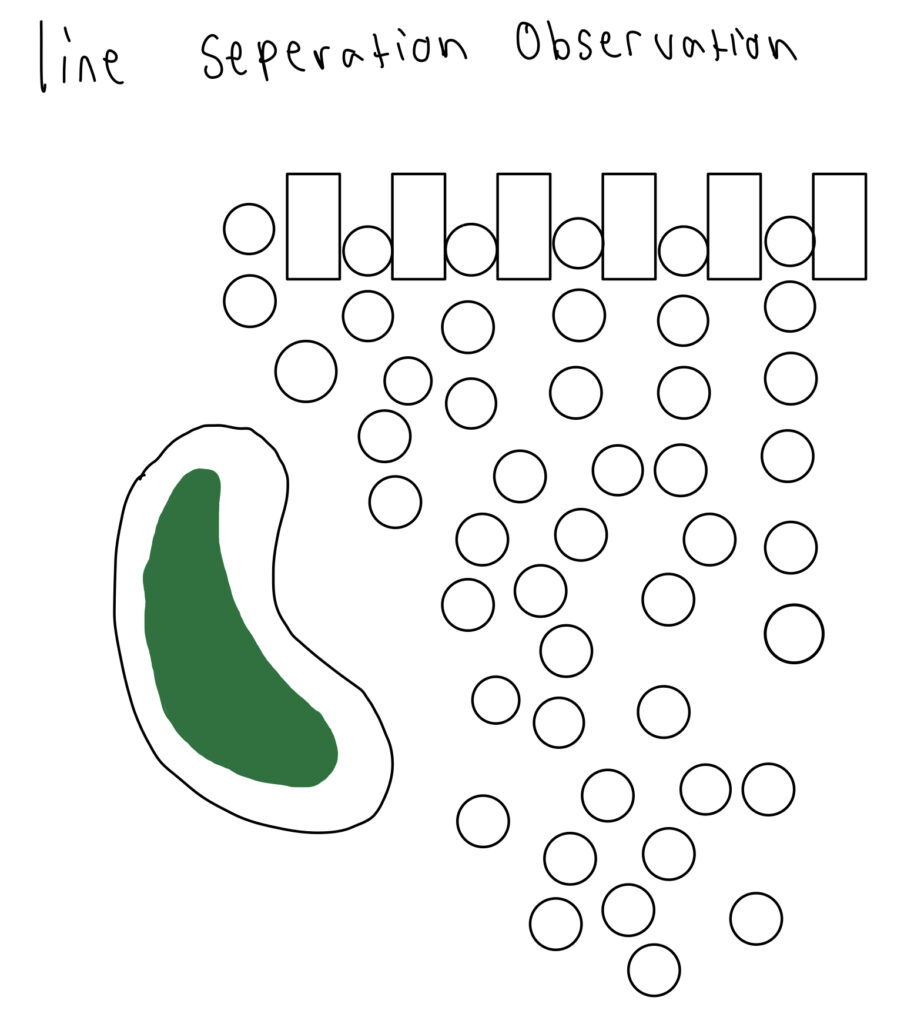
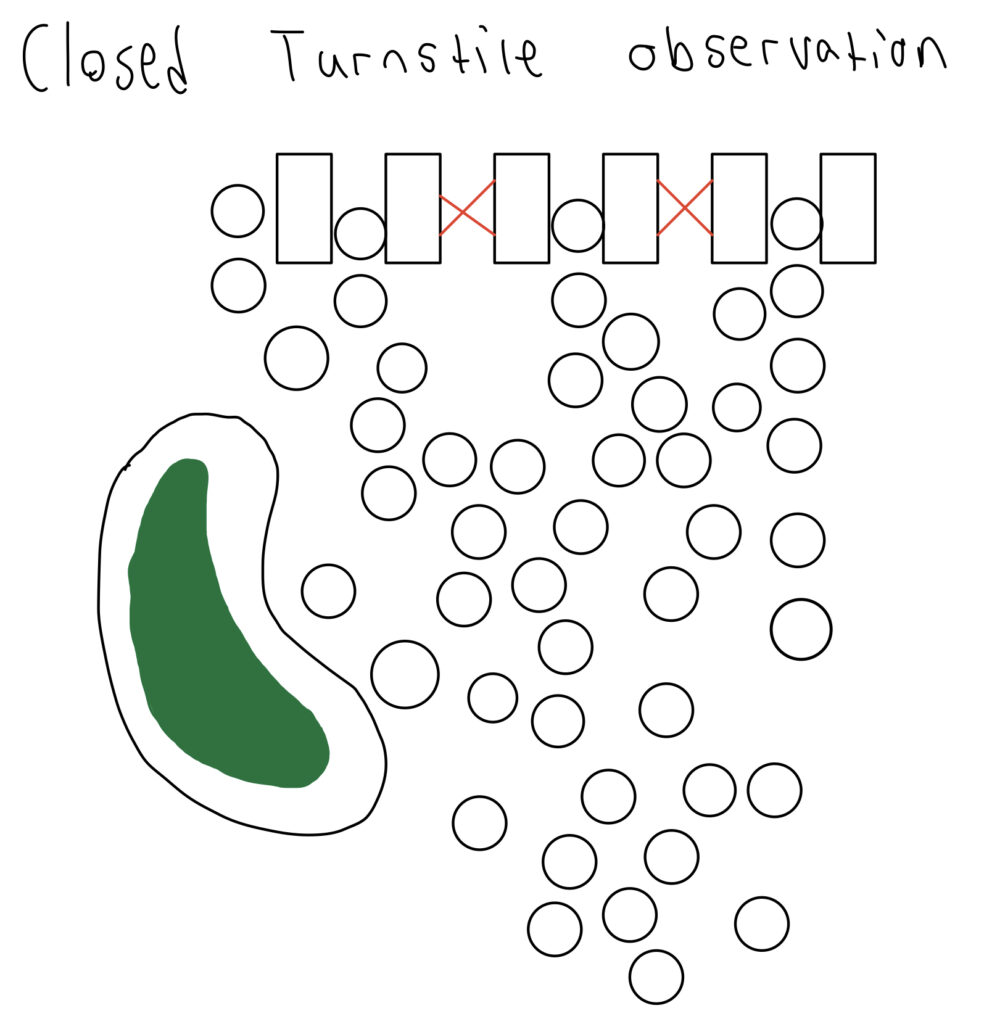
Benevolent Solution
My solution to this problem revolves around a machine program that can identify the current state of a line regarding its length and identify guests waiting in a single queue and assign them a turnstile row to go to. There would be a physical queue that all guests would enter together and they would eventually be instructed on which line to join by a human operator who would have a line of communication with the crowd grouping analyzer.
More Specifically, the program would have to give a weight to different groups in order to ensure that its assignments create a near equal wait time for all guests entering the park. There are a lot of discretionary factors that would have to go into this type of screening algorithm that borders the line of data representation and discrimination.
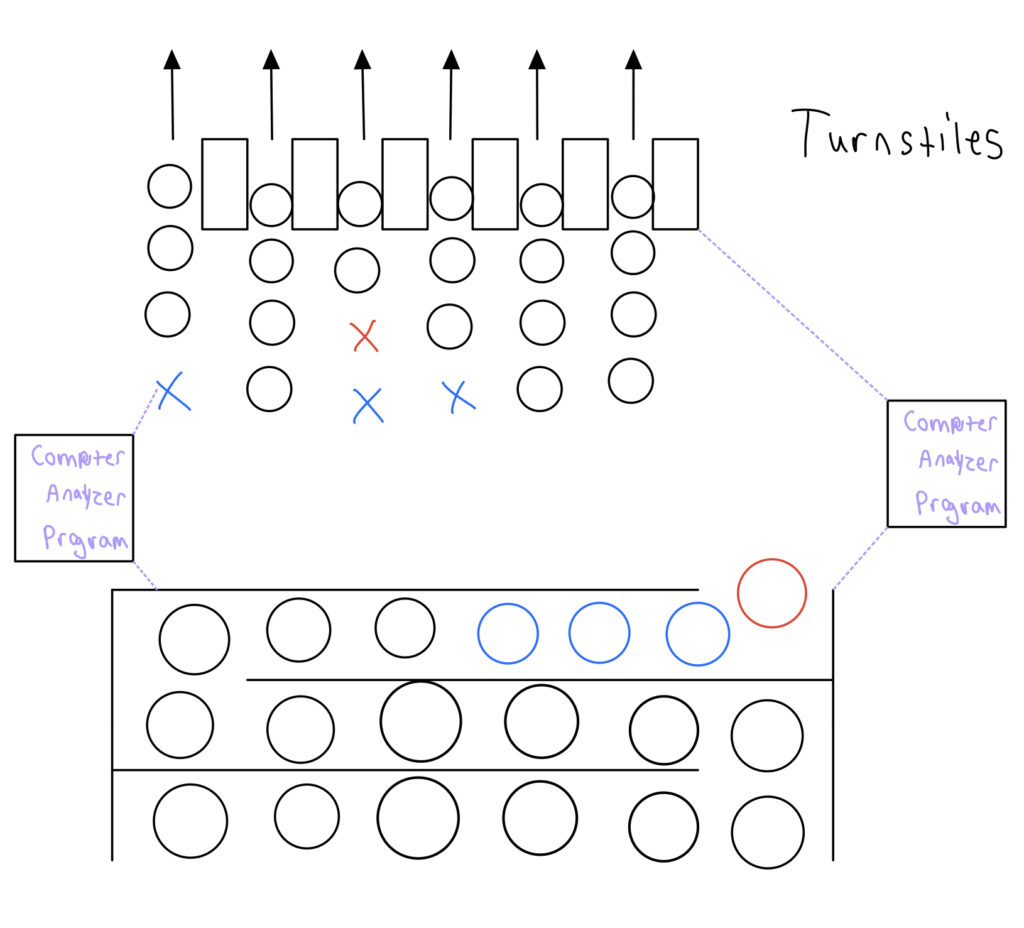
Ultimately, this is a way of giving the perception to guests that their wait time is less than it actually is. By having the crowds moving consistently in a single line (everyone equal) and then assigning them a turnstile line that is an equivalently short wait as everyone else, it should take away that nagging sensation that all too many of us have had before, “Ugh, I picked the wrong line.”
Project Bump
Posted: January 25, 2022 Filed under: Uncategorized Leave a comment »I chose to bump this post for a myriad of reasons. Primarily, this is an old companion that I did not know took this course so his name caught my attention. Secondly, I am a huge fan of projection mapping. This course has reframed my understanding of interaction with technology and I believe that Aarons project demonstrates a great compromise between digital systems and real time feedback.